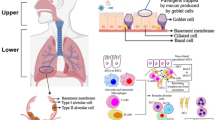Abstract
Objective:
Neonatal deaths account for 44% of the world’s under-5 child mortality. Over half of all neonatal deaths globally occur in preterm babies. Therefore, improving care of a preterm baby is particularly important to reduce under-5 mortality. The objective of this study was to spell out components of care of preterm/low birth weight babies at first level health facility and at first referral unit (FRU) in low resource settings.
Study Design:
We have analyzed weight-wise survivals at two hospitals attached to medical colleges, J.J. Hospital, Mumbai and General Hospital, Talegaon, and at Rural Hospital, Dahanu. There were three-tier interventions: (i) warmth+ feeding and antibiotics, (ii) improved care at birth plus increased oxygen availability and (iii) use of dopamine. J.J. Hospital went through all these stages one after another; General Hospital had all three going simultaneously. The Rural Hospital had a 1+2.
Results:
During 1978 to 1984, J.J. Hospital saved 50 to 55% very low birth weight (VLBW) babies by providing warmth, feeding and antibiotics. This percentage increased to 56 to 58%, when adequate oxygen and good care at birth was available (1984 to 1989). For babies in the moderately low birth weight category (MLBW), 1500 to 2000 g at birth, the corresponding figures were 56 to 58% and 84 to 86%. The same interventions led to statistically significant decline in MLBW and VLBW categories at General Hospital, Talegaon (2010 to 2013). The Rural Hospital, Dahanu (1987 to 1992) achieved better survival rates in VLBW (61.5%) and MLBW (92.5%) categories with identical interventions and less staff.
Conclusion:
On the basis of our results, we suggest that in resource-limited settings, the first level health facility may be able to look after short-stay babies that weigh more than 1500 g and that have no respiratory distress. The FRU may look after MLBW babies, with or without respiratory distress, and VLBW babies without respiratory distress by giving special care.
This is a preview of subscription content, access via your institution
Access options
Subscribe to this journal
Receive 12 print issues and online access
$259.00 per year
only $21.58 per issue
Buy this article
- Purchase on Springer Link
- Instant access to full article PDF
Prices may be subject to local taxes which are calculated during checkout


Similar content being viewed by others
References
Lawn JE, Cousens S, Zupan J, Lancet Neonatal Survival Steering Team. 4 million neonatal deaths: when? Where? Why? Lancet 2005; 365: 891–900.
Committing to Child Survival: A Promise Renewed – Progress Report UNICEF, 2015.
Belizan JM, McClure EM, Goudar SS . Neonatal death in low-to middle-income countries: a global network study. Am J Perinatol 2012; 29 (649): 56.
Bahl R, Martines J, Bhandari N, Biloglav Z, Edmond K, Iyengar S et al. Setting research priorities to reduce global mortality from preterm birth and low birth weight by 2015. J Glob Health 2012; 2 (1): 010403.
Liu L, Johnson H, Cousens H, Perin J, Scott S, Lawn JE et al. Global, regional and national causes of child mortality: an updated systematic analysis for 2010 with time trends since 2000. Lancet 2012; 379: 2151–2161.
Darmstadt GL, Bhutta ZA, Cousens S, Adam T, Walker N, deBurnis L, Lancet Neonatal Survival Steering Team. Evidence-based, cost-effective interventions: how many newborn babies can we save? Lancet 2005; 365: 977–988.
Daga SR, Daga AS . Impact of breast milk on the cost-effectiveness of the special care unit for the newborn. J Trop Pediatr 1985; 31: 121–123.
Hughes-Davis TH . Conservative care of the newbom baby. Arch Dis Child 1979; 54: 59–61.
Daga SR, Daga AS . Reduction in neonatal mortality with simple interventions. J Trop Pediatr 1989; 35: 197–198.
Daga SR, Gajendragadkar A, Iyer R, Swaminathan M, Doshi M . Algorithm for managing a baby with dusky soles. J Trop Pediatr 1995; 41: 241–243.
Daga SR, Daga AS . First revision of mortality prevention potential of conservative neonatal care. J Trop Pediatr 1990; 36: 266.
Kadam SB, Daga SR, Daga AS . Quality of survival on conservative newborn care. J Trop Pediatr 1991; 37: 250–253.
Upadhyay A, Gothwal S, Parihar R, Garg A, Gupta A, Chawla D, Gulati IK . Effect of umbilical cord milking in term and near term infants: randomized control trial. Am J Obstet Gynecol 2013; 208: 120.
Mullany LC, Darmstadt GL, Khatry SK, Katz J, LeClerq SC, Shrestha S et al. Topical applications of chlorhexidine to the umbilical cord for prevention of omphalitis and neonatal mortality in southern Nepal: a community-based, cluster-randomised trial. Lancet 2006; 367: 910–918.
Duke T, Willie L, Mgone JM . The effect of introduction of minimal standards of neonatal care on in-hospitalmortality. PNG Med J 2000; 43 (1–2): 127–136.
Daga SR, Daga AS, Dighole R, Patil RP, Dhinde HL . Rural neonatal care: Dahanu experience. Indian Pediatr 1992; 29: 189–193.
Neogi SB, Malhotra S, Zodpey S, Mohan P . Assessment of special care newborn units in India. J Health Popul Nutr 2011; 29: 500–509.
Borulkar PD, Borulkar SP, Dhole RK, Daga SR . Special care for newborns at a community hospital: a 5-year experience. Trop Doctor 1998; 28: 201–203.
Acknowledgements
We thank Dr Sudhakar Ezuthachan, Prof Sanjay Patole and Dr Mohan Swaminathan for their useful suggestions.
Author information
Authors and Affiliations
Corresponding author
Ethics declarations
Competing interests
The authors declare no conflict of interest.
Rights and permissions
About this article
Cite this article
Daga, S., Daga, A., Mhatre, S. et al. Enhancing neonatal survival: what can we do today?. J Perinatol 36, 681–684 (2016). https://doi.org/10.1038/jp.2016.51
Received:
Accepted:
Published:
Issue Date:
DOI: https://doi.org/10.1038/jp.2016.51



